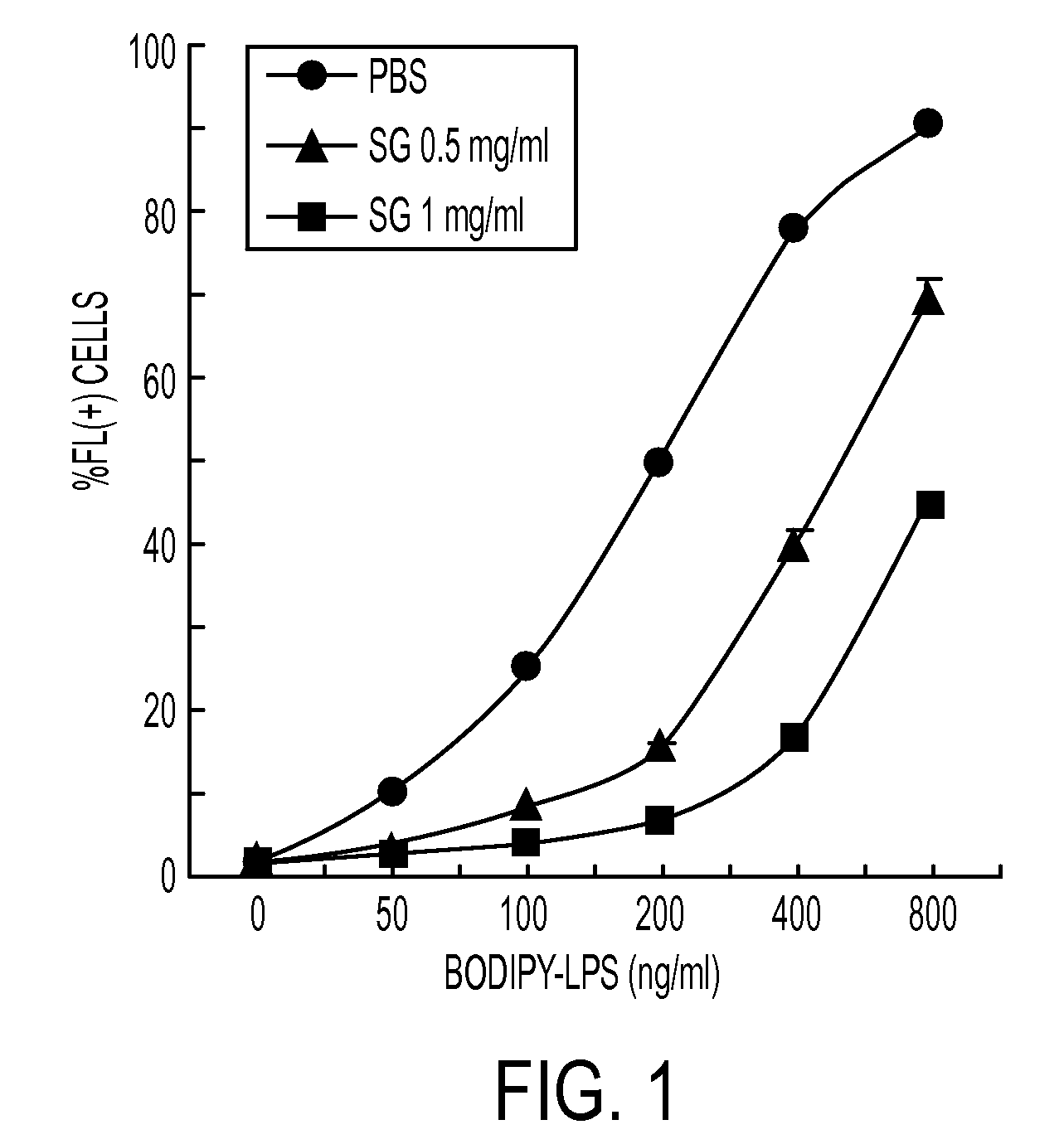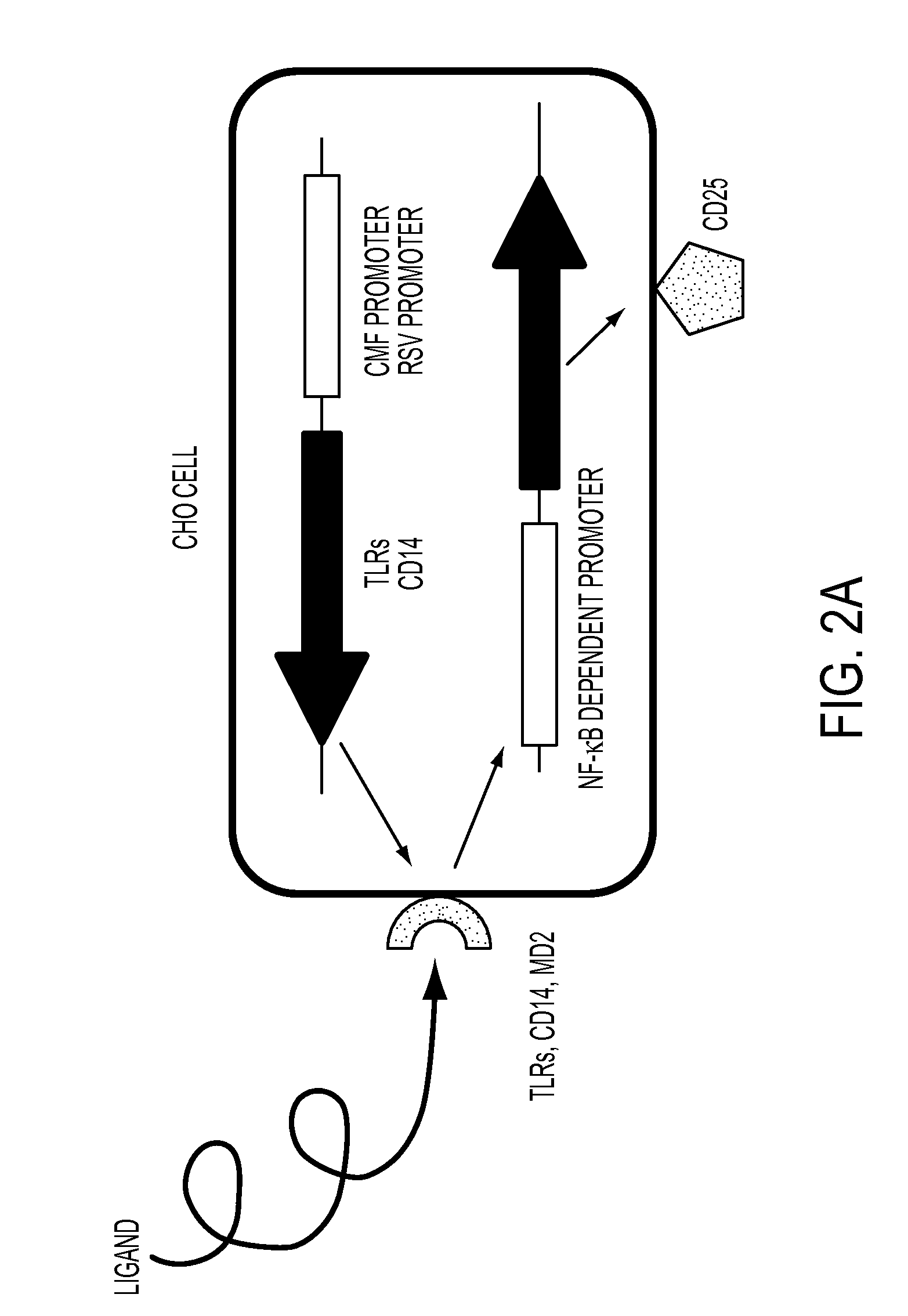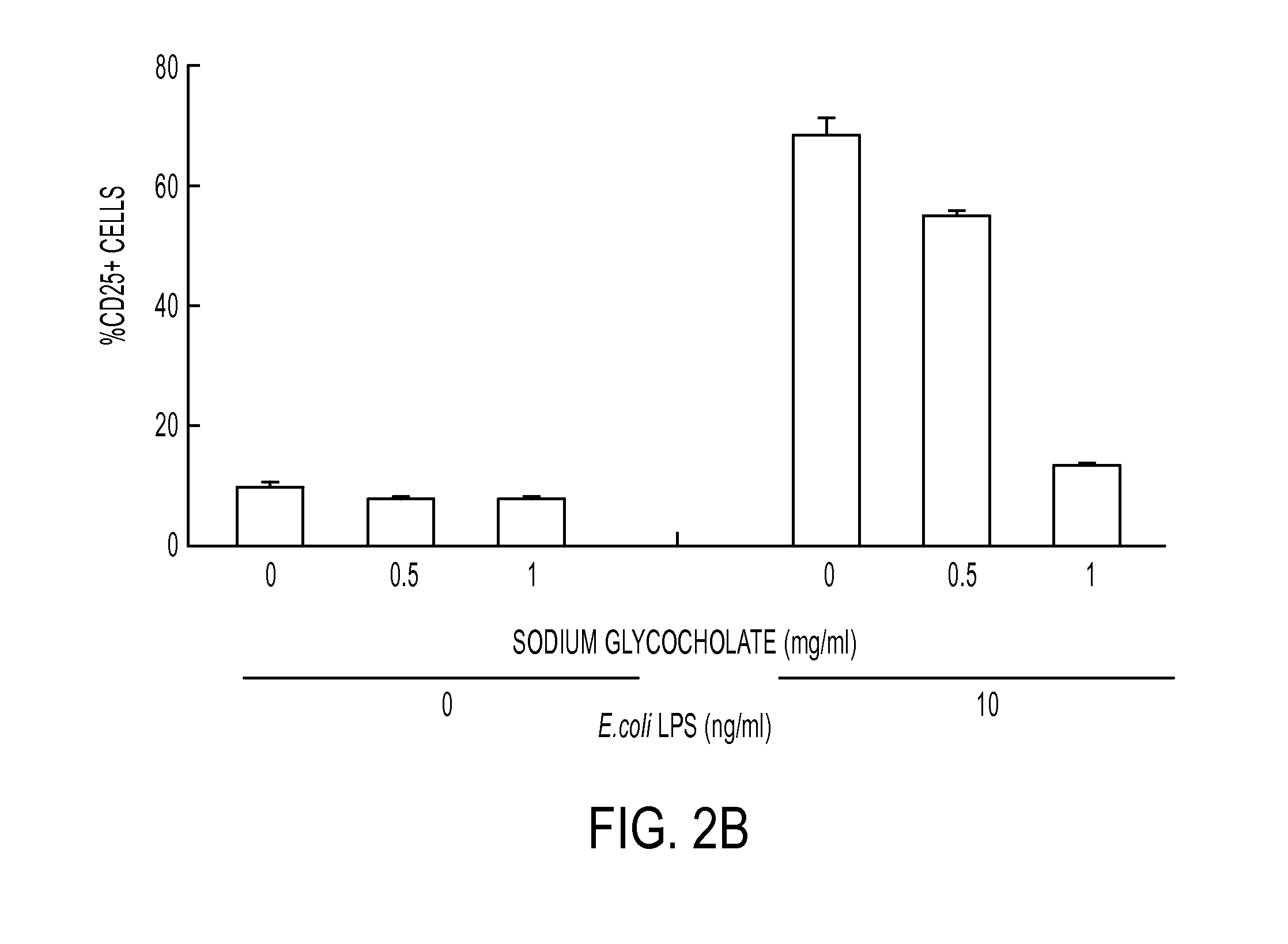Use of biological surfactant as Anti-inflammatory agent and tissue preservative solution
a biological surfactant and tissue preservative technology, applied in the direction of antibacterial agents, drug compositions, cardiovascular disorders, etc., can solve the problems of tissue necrosis with a serious inflammatory response, increase in immune responses, and serious problems in emergency room, so as to achieve effective inflammatory response and enhance the function of the organ or cell
- Summary
- Abstract
- Description
- Claims
- Application Information
AI Technical Summary
Benefits of technology
Problems solved by technology
Method used
Image
Examples
example 2
Assay of the Inhibition for the Activation of E. Coli LPS-Stimulated NF-κB
[0079]In order to evaluate the inhibition efficacy for the activation of E. coli LPS-stimulated NF-κB in a CHO cell, % expression of CD 25 in the CHO cell was evaluated as the following method, and FACS analysis after staining with 7-AAD was carried out to evaluate the cytotoxicity. Bile salts were classified into 3 groups based on their solubility in different solvents, as follows:
[0080]Group I. Water-soluble chemicals: sodium glycocholate hydrate, sodium deoxycholate, sodium glycochenodeoxycholate, sodium taurochenodeoxycholate, sodium taurocholate hydrate, sodium taurodeoxycholate hydrate
[0081]Group II. Ethanol-soluble chemicals: dehydrocholic acid, lithocholic acid, chenodeoxycholic acid, glycocholic acid hydrate
[0082]Group III. Methanol-soluble chemical: cholic acid
[0083]Culture and Stimulation of Cells
[0084]The CHO cells expressing CD25 under the regulation of a nuclear factor (NF-κB) promoter, shown FIG...
example 3
Assay of the Inhibition of Sodium Glycocholate on LPS which Activates Dendritic Cells
[0096]In order to assay the effect of sodium glycocholate on the activation procedure of antigen presenting cells, which is induced by E. coli LPS, cells were separated from the bone marrow of recombination activating gene 2 (Rag2) deficient mouse. The separated cells were plated at 2×105 cells / well in a 96-well plate and then treated with 1.5 ng / ml of granulocyt-macrophage colony-stimulating factor (GM-CSF) and 0.75 ng / ml of interleukin-4 followed by the differentiation of the cells into dentritic cells through 6-day incubation.
[0097]The dendritic cells were well mixed with sodium glycocholate and LPS. The mixtures were stimulated for 18 hours at 37° C., and stained with anti-CD40-FITC, anti-CD80-FITC, anti-I-Ab-PE, anti-CD86-PE, 7AAD and anti-CD11c-APC, then the cells were assayed via a flow cytometer. Each group was treated and assayed at least twice, and the results were statistically analyzed t...
example 4
Assay of In Vitro Proinflammatory Cytokine Generation by E. coli LPS
[0099]In order to assay the effect of sodium glycocholate on the generation of proinflammatory cytokines induced by E. coli LPS, dendritic cells were prepared in the same way as Example 3, and macrophages were separated from the abdomen of C57BL / 6 mouse. Thereafter, sodium glycocholate and LPS were reacted in vitro for 1 hour at 37° C., and then mixed with the cells. Each cell was stimulated for 14 hours at 37° C., and then supernatant fluid was separated.
[0100]The concentrations of TNF-α and interleukin-12p40 in the separated supernatant fluid was measured by an enzyme-linked immunoabsorbent assay (ELISA).
[0101]The generation of TNF-α from the macrophages and the dendritic cells by the LPS stimulation were inhibited so as to be 42.2±0.9% (p<0.05) and 70.2±2.3% (p<0.05) respectively at 0.5 mg / ml of sodium glycocholate, and 87.8±0.2% (p<0.05) and 101.0±0.2% (p<0.05) respectively at 1 mg / ml of sodium glycocholate. It ...
PUM
 Login to View More
Login to View More Abstract
Description
Claims
Application Information
 Login to View More
Login to View More - R&D
- Intellectual Property
- Life Sciences
- Materials
- Tech Scout
- Unparalleled Data Quality
- Higher Quality Content
- 60% Fewer Hallucinations
Browse by: Latest US Patents, China's latest patents, Technical Efficacy Thesaurus, Application Domain, Technology Topic, Popular Technical Reports.
© 2025 PatSnap. All rights reserved.Legal|Privacy policy|Modern Slavery Act Transparency Statement|Sitemap|About US| Contact US: help@patsnap.com



